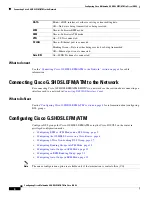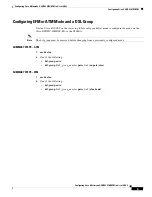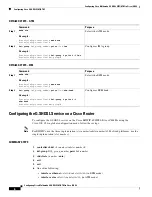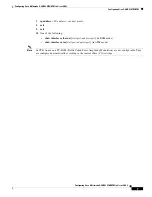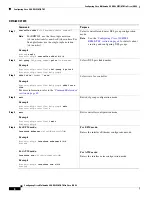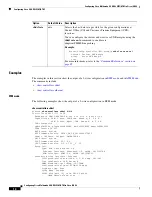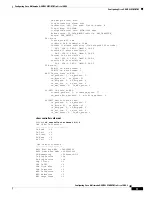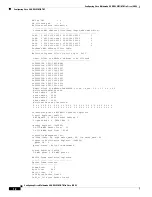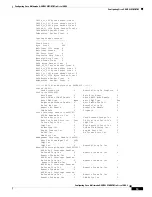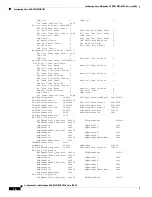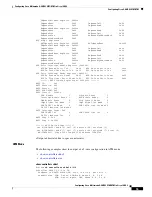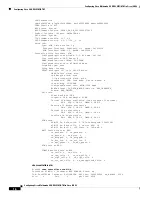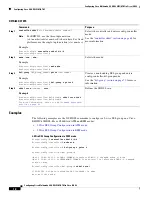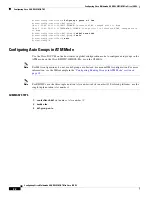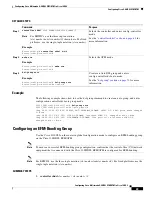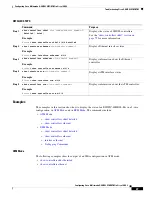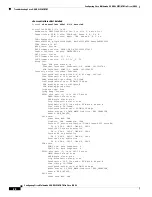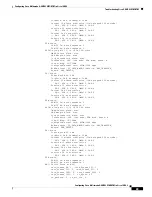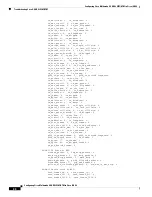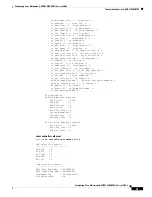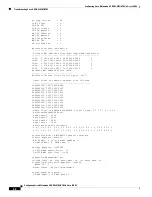
Configuring Cisco Multimode G.SHDSL EFM/ATM in Cisco ISR G2
Configuring Cisco G.SHDSL EFM/ATM
17
Configuring Cisco Multimode G.SHDSL EFM/ATM in Cisco ISR G2
Sar ctrl queue: max depth = 0, current queue depth = 0,
drops = 0, urun cnt = 0, total cnt = 0
VC TX ring stats:
VCD VPI VCI Tx_ring_High_Watermark Tx_ring_Low_Watermark Queue_Depth
==========================================================================
VC queues buffering status:
VCD VPI VCI Buffering status
================================
VC QoS Summary
--------------
Active Scheduled
VCD VPI VCI COS ST COS PCR(c) PCR(a) SCR/MCR(c) SCR/MCR(a)
--------------------------------------------------------------------------
OAM statistics (vcd/count/drop)
-------------------------------
1/0/0 2/0/0 3/0/0 4/0/0 5/0/0 6/0/0 7/0/0 8/0/0
Misc Oam Drops: 0
ATM Encap Mapping
Tx Congestion
Entry MAC address VPI/VCI VCD sts set clr fastsend safestart
drops
------------------------------------------------------------------------------------------
-----
<Output abbreviated due to space constraints. The show controller ethernet output follows from this
point.>
Configuring 2-Wire Non-bonding DSL Group
To configure a 2-wire non-bonding DSL group on a Cisco G.SHDSL EFM/ATM, use the Cisco IOS CLI
on the router in global configuration mode. Configuring 2-wire non-bonding DSL group is the same for
EFM and ATM modes.
Note
For EHWICs, use the three-tuple notation (
slot number/subslot number/0
). For fixed platforms, use the
single-tuple notation (
slot number
).
SUMMARY STEPS
1.
controller shdsl
slot number/subslot number/0
2.
mode
{
atm
|
efm
}
3.
dsl-group
DSL_group_number
pairs
link-number
4.
shdsl rate
{
number
|
auto
}


